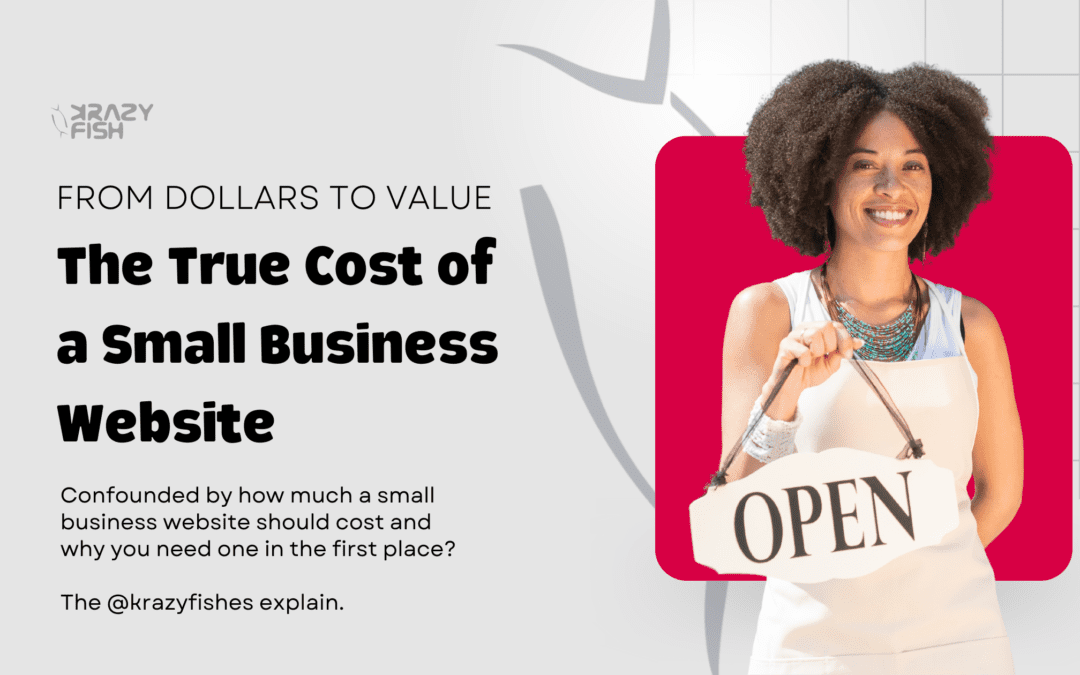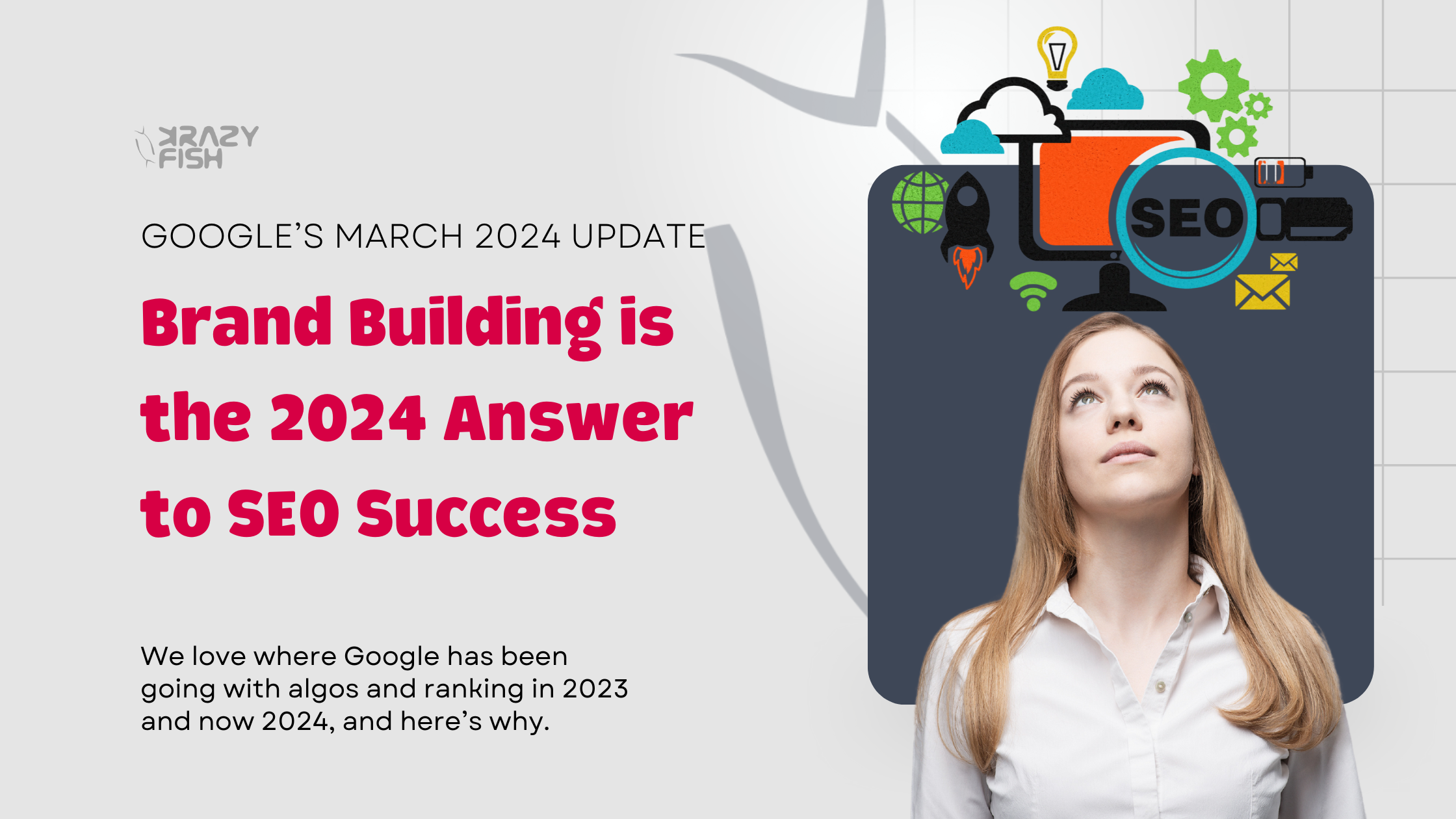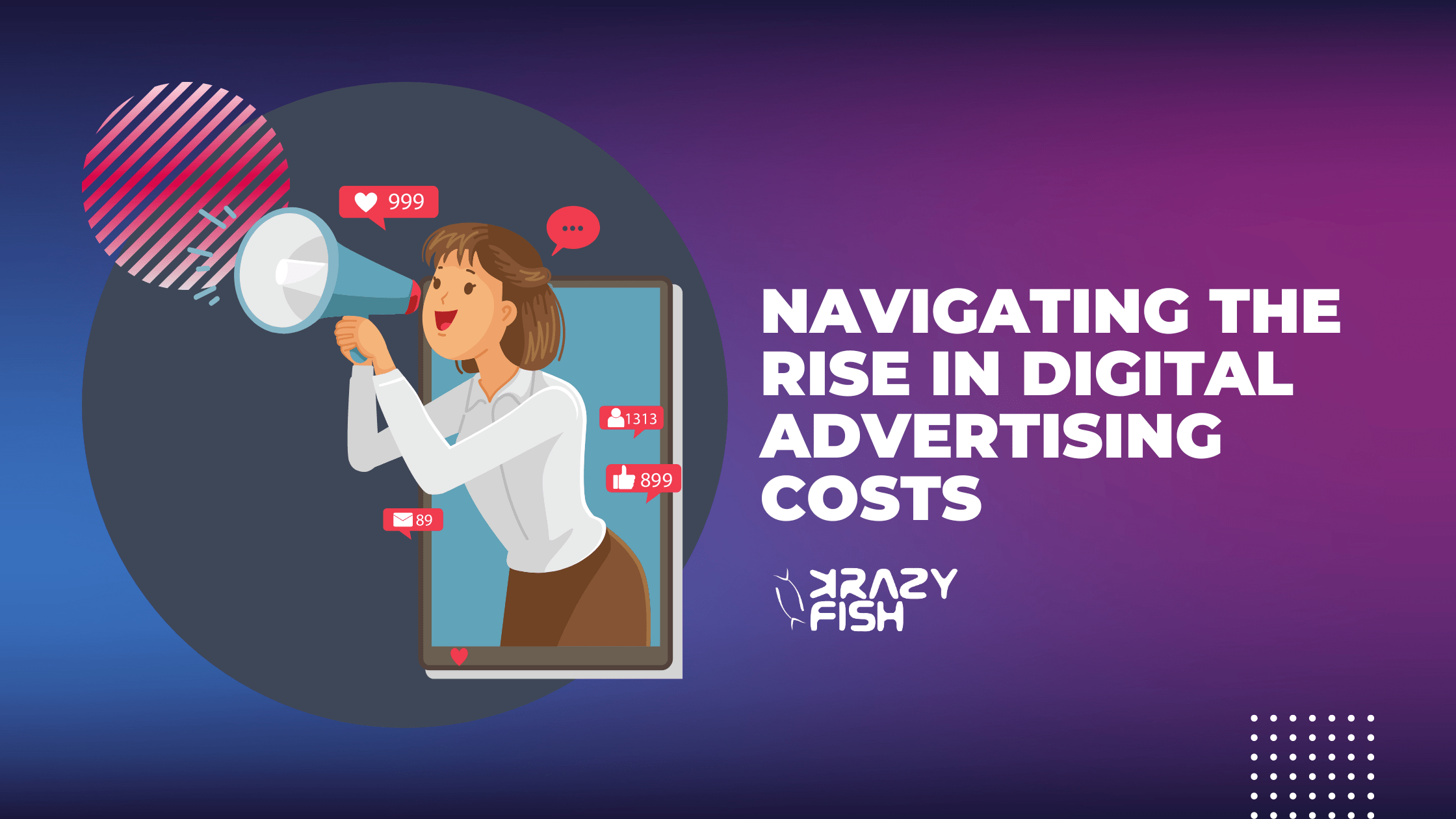Are you a small business owner looking to create a website, but unsure about the true cost? You’re not alone. Many entrepreneurs underestimate the value a website can bring to their business. It’s not just about the dollars spent; it’s about the long-term return on investment.
But let’s go beyond just the initial financial investment. Let’s talk about the purpose that your website should serve and the various elements that contribute to the overall value of a website, from design and user experience to functionality and search engine optimization.
Almost a third of small business owners say they don’t need a website. Until a pandemic, for example, hits the proverbial fan. By understanding the true cost of a website, you can make informed decisions and allocate your resources effectively. From attracting new customers to keeping you in business when the going gets tough, a well-designed and optimized website can significantly impact your business’s growth and success.
Ready to elevate your little local business to new heights with a website that truly delivers results? Let’s get to it then.
Get to the Point
The components of a small business website
A small business website is more than just a collection of web pages. It is a digital representation of your brand and an essential tool for connecting with your target audience. To understand the true cost of a small business website, it’s important to first understand its various components.
Design: The design of your website plays a crucial role in attracting and engaging visitors. It includes elements such as layout, color scheme, typography, and imagery. A well-designed website not only looks visually appealing but also reflects your brand’s identity and values.
Functionality: The functionality of a website refers to how it works and what it can do. It includes features such as navigation, forms, e-commerce capabilities, and interactive elements. The level of functionality required for your small business website depends on your specific goals and the needs of your target audience.
User Experience: User experience (UX) focuses on how users interact with your website and how easy it is for them to find the information they need. A positive user experience leads to higher engagement, longer visit durations, and increased conversions. Factors that contribute to a good UX include intuitive navigation, fast loading times, and mobile responsiveness.
Search Engine Optimization: Search engine optimization (SEO) is the process of optimizing your website to rank higher in search engine results pages. It involves strategies such as keyword research, on-page optimization, link building, and content creation. A well-optimized website can drive organic traffic and increase your online visibility.
Understanding these components is essential in determining the true cost of a small business website. Each element requires time, expertise, and resources to implement effectively. Now let’s explore the factors that affect the cost of a small business website.
The true cost of a small business website
For starters. let’s explain what we mean by “true cost”. This is different than the amount of money you pay a web designer or marketing agency to build your website and get it up and running for you. By true cost, we mean how much you spend on that website versus what it brings you. And by “what it brings you” we don’t mean that it makes you feel warm and fuzzy to look at it. The true cost of your small business website comes down to how it affects your business reputation, whether it brings in new customers, or whether it increases sales.
When considering the cost of a small business website, it’s so important to look beyond the initial financial investment. While the upfront cost is a significant factor, it is just one piece of the puzzle. The true cost of a website includes both the tangible and intangible elements that contribute to its overall value.
Development: The development phase involves building the actual website. It includes tasks such as coding, designing layouts, creating templates, and integrating functionality. The cost of development can vary depending on the complexity of the website and the expertise of the web developer or agency.
Content Creation: Content is a crucial element of a small business website. It includes text, images, videos, and other media that communicate your brand’s message and provide value to your audience. Creating high-quality and engaging content requires time and resources, whether you do it in-house or hire a professional content creator.
Maintenance and Updates: A website is not a one-time investment; it requires ongoing maintenance and updates to ensure it remains secure, functional, and up-to-date. This includes tasks such as software updates, security patches, bug fixes, and content updates. The cost of maintenance can vary depending on the complexity of the website and the level of support required.
Marketing and Promotion: Once your website is live, you need to drive traffic to it. This involves marketing and promotion activities such as search engine marketing, social media marketing, email marketing, and content marketing. The cost of marketing and promotion can vary depending on your goals, target audience, and the channels you choose to invest in.
When calculating the true cost of a small business website, consider these factors and allocate your resources accordingly. Now let’s explore the pros and cons of DIY website creation versus hiring a professional.
Factors that affect the cost of a small business website
If you’ve already asked a freelancer or agency how much a website would cost to build, it’s like their initial answer was, “It depends.” They weren’t being shady. There are a million factors that can influence the overall price. These factors include the complexity of the design, the number of pages, the functionality required, and any additional features such as e-commerce capabilities or booking systems.
Another important factor to consider, before you even request a quote, is whether you choose to go with a DIY approach or hire a professional web designer or agency. While the DIY route may seem cost-effective initially, it can often lead to subpar results and limited functionality. Or it could take you ages to learn and build a website. Time that might be better spent running your business. If you value your time and your business, hiring a professional is usually the best route and can ensure a high-quality website that meets your business’s specific needs.
It’s also incredibly important – and often missed – to consider ongoing costs such as web hosting, domain registration, and website maintenance. These expenses can add up over time and should be factored into your budget. (Quick note, we offer all of that and more in our small business web design packages.)
DIY vs. hiring a professional: Pros and cons
The eternal question: to DIY or not to DIY? Website builders like WordPress, Squarespace, and Wix offer cost-effective, user-friendly platforms. They’re perfect for those just starting or with limited budgets. However, if your needs are complex or you’re aiming for a uniquely branded presence, professional design and development might be the way to go. Balance cost with the potential return on investment a professional site can bring.
Keep the Future in Mind
Your website is not just an up-front cost. It’s an investment in the future of your business (and your time). As you grow, your site will need to scale with you. Plan for the long term by ensuring your new online home can accommodate new features, increased traffic, and evolving business models.
Budgeting for a small business website doesn’t have to be a trek through uncharted waters. With a clear understanding of costs, a focus on your business needs, and a strategic approach to funding, you can build a digital presence that not only meets your current needs but also paves the way for future growth. Remember, in the vast digital ocean, your website is your beacon. Make it shine!
With thoughtful planning and strategic investment, your website will become a cornerstone of your business’s digital identity and growth.
How to budget for a small business website
Creating a budget for your small business website is a crucial step in the planning process. By setting a realistic budget, you can allocate your resources effectively and ensure you get the most value for your investment.
Understand the Costs
First things first, understanding the breakdown of website costs is crucial. Think of your website as a virtual storefront; just like a physical location, its complexity, design, and features dictate the price. Here’s a basic rundown:
- Domain Name: Your digital address. A yearly expense, typically around $10 to $20.
- Hosting: Think of this as your online lease. Shared hosting plans start cheap, around $3 to $7 per month, while dedicated hosting can climb to $100 per month or more for high-traffic sites.
- Design and Development: The heart of your online presence. Costs can range dramatically based on whether you go DIY with a website builder ($10 to $40 per month) or hire a professional (upwards of $5,000 for a custom design).
- Maintenance and Updates: Keeping your site fresh and functional. Budget for ongoing costs, which can range from $50 to $1,000 per year, depending on how much you handle in-house.
Prioritize Your Needs
Before diving into the digital deep end, take a moment to align your website’s features with your business goals. Not every site needs the bells and whistles of an e-commerce titan. Focus on what will directly impact your growth and customer engagement. Essentials often include:
- Responsive Design: Ensures your site looks great on all devices.
- SEO: Helps customers find you through search engines.
- Content Management System (CMS): Allows you to update your site without coding knowledge.
- Security Features: Protects your site and your customers’ information.
- Functionalities: Do you need a simple digital storefront or an online storefront for sales, bookings, or lead collection?
Seriously though, how much can a small business website cost?
We’re not just pulling your SEO leg here. Let’s get down to it. Depending on the size, expected revenue, and location of your small business, we know you’re looking for real numbers. Unfortunately, the best we can give you – unless you scroll down to the bottom of this page and request a quote – is a range. Essentially, for small or local businesses, there are three tiers in terms of building a website. And here’s what you can expect from each of them:
Basic Small Business Website
Purpose: Establish an online presence, and make the business easier to find.
Features: Homepage, contact page, about us section, basic SEO.
Cost Range: $500 – $2,500.
Typical Expenses: Domain name, basic shared hosting, free to low-cost template, minimal custom design.
Mid-Tier Small Business Website
Purpose: Enhanced user engagement with content and functionality for bookings, quotes, or lead collection.
Features: Enhanced SEO, blog, service/product pages, booking or quote forms, mobile optimization.
Cost Range: $2,500 – $7,000.
Typical Expenses: Customized professional (paid) theme, CMS (e.g., WordPress), basic e-commerce functionality for bookings or services, improved hosting plan, various plugins, technical SEO, and initial content creation.
Fully-Decked Out Small Business Website
Purpose: Maximize SEO, discoverability, user engagement, bookings, leads, and sales.
Features: Advanced SEO, custom design, e-commerce capabilities, professional photography and videos, customer reviews, live chat, enhanced security features.
Cost Range: $7,000 – $15,000 (or more for highly customized solutions).
Typical Expenses: All of the above plus custom website design and development, premium hosting, comprehensive SEO strategy, content marketing strategy, and advanced functionality (e.g., customer portals, membership areas).
Keep in mind, that these ranges are approximate and can vary based on the specific needs of your business, the complexity of the website, and the professionals you choose to work with. Investing in a website should be tailored to your business objectives, growth strategy, and how you want to engage with your customers. Think of it as building a digital home for your brand; it’s about creating a space where your customers can learn, interact, and grow with you. So, choose the tier that aligns with your current needs, but always with an eye on future scalability. Your website is not just a line item on your budget; it’s the digital heartbeat of your business.
Tips for finding the right web designer or agency
Your website is the digital embodiment of your brand. It’s the first thing potential new customers will see and know about you. And first impressions matter. That’s why the person or team behind its creation needs to get you — not just your business goals, but your values, your voice, and the unique flavor of your brand. Here’s how to find your digital soulmate: Look for Industry Experience
Look for designers or agencies with a proven track record in your sector. They’ll have an instinctive understanding of your audience’s needs and expectations, and they’ll know what works (and what doesn’t). This industry insight can be the difference between a site that performs and one that merely exists.
Prioritize Communication
The best relationships are built on clear, open communication. Your design partner should not only listen to your ideas but also translate them into digital reality. They should be able to explain technical concepts in plain language and keep you updated throughout the project.
Assess Cultural Fit
Your web designer or agency is an extension of your team, so it’s important they vibe with your culture. This goes beyond professional rapport; it’s about sharing similar values and enthusiasm for your project. A designer who is genuinely excited about your vision will always go the extra mile.
Trust Your Gut
How did that introductory call with your new web designer go? Do they even offer a free initial call to get to know them? Do they seem on the level? A great website is part of a solid foundation for your business. You can’t have just anyone building it.
In your search for the perfect web design partner, remember – it’s less about finding a service provider and more about discovering a collaborator. The right fit means someone who not only understands the technical side of things but who also appreciates the heart and soul of your business. With these tips in hand, you’re well on your way to forging a partnership that turns your website from a dream into a digital destination that truly represents your brand.
Embarking on this journey with the right partner can transform the daunting task of web design into an exciting voyage toward growth and success. So set sail with confidence, knowing that the perfect collaborator is out there, ready to bring your digital vision to life.
Maximizing the value of your small business website
Creating a small business website is just the first step. To maximize the value of your website, consider implementing the following strategies:
Mastering SEO with Content Creation
- Blog to Boost Visibility: Regularly updating your website with fresh, relevant blog content is a key strategy for improving SEO rankings. Each blog post is an opportunity to rank for new keywords, keeping you visible and discoverable to potential customers.
- Focus on Value: Provide valuable information that addresses the needs and questions of your target audience. This not only boosts SEO but establishes your business as an authority in your field.
Fostering Customer Relationships through Email Marketing
- Collect Emails with Care: Use your website to collect email addresses from visitors, offering them valuable content or discounts in exchange for their subscription.
- Personalize and Engage: Send regular, personalized email updates to keep your brand top-of-mind. Share news, special offers, and valuable insights to enhance customer loyalty and encourage repeat business.
Expanding Reach with Social Media and Ads
- Integrate and Promote: Ensure your website integrates seamlessly with your social media profiles. Use your website’s landing pages as the foundation for targeted ad campaigns on platforms where your customers spend their time.
- Boost with Ads: Invest in social media advertising to boost the visibility of your website’s key landing pages. Tailored ads can drive traffic, increase sales, and attract more customers by highlighting special offers, new products, or engaging content.
Using Data and Analytics for Continuous Improvement
- Track and Analyze: Implement tools like Google Analytics to track website traffic and user behavior. Understanding where your visitors come from and what they do on your site can help you refine your strategies.
- Iterate Based on Insights: Use the insights gained from analytics to make informed decisions about content, marketing strategies, and website design improvements.
Embrace the Mobile Movement
- Optimize for Mobile: With an increasing number of searches and interactions happening on mobile devices, ensuring your website is mobile-friendly is non-negotiable for reaching potential customers and providing a positive user experience.
Your website is the cornerstone of your online presence, but its true value is going to lay in how you use it to engage with customers, optimize visibility, and drive growth. By focusing on content that boosts SEO, leveraging email marketing to build relationships, utilizing social media for broader reach, and continuously analyzing and adapting your strategies, you can transform your website from a static digital brochure into a dynamic tool that helps you grow your business.




